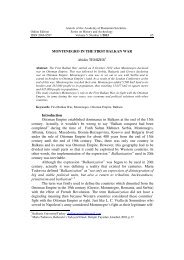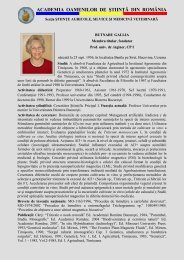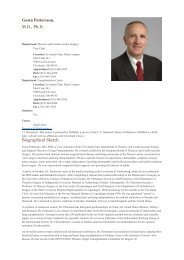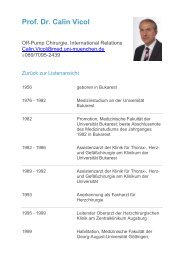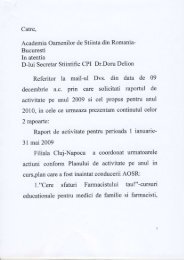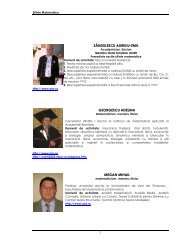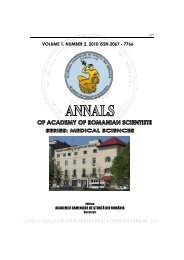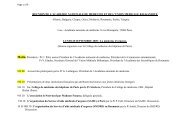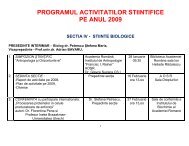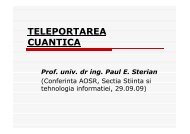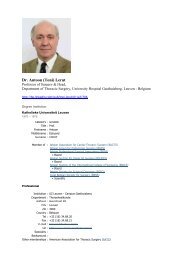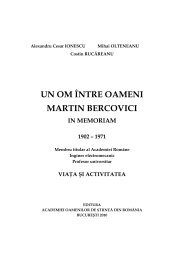Volume 3 nr 1 / 2011 - Academia Oamenilor de Stiinta din Romania
Volume 3 nr 1 / 2011 - Academia Oamenilor de Stiinta din Romania
Volume 3 nr 1 / 2011 - Academia Oamenilor de Stiinta din Romania
- No tags were found...
Create successful ePaper yourself
Turn your PDF publications into a flip-book with our unique Google optimized e-Paper software.
94 Andrei Szu<strong>de</strong>rCloning of the approved projects. Copying a project (method used by someconsulting firms) that has already been approved in another call for proposals orin another program, or replacing only the recipient i<strong>de</strong>ntification data withoutmany changes, is a guarantee of success.Collaboration between consultant and customer is essential in <strong>de</strong>veloping aproject proposal. Projects without consultation and collaboration of the twoparties are lea<strong>din</strong>g in most cases, to projects lack without real support which cannot be achieved. There are many examples of this type.Cloning of an approved project in which was provi<strong>de</strong>d to purchase a particulartype of equipment, the beneficiary having already some components of theequipment.Selection for fun<strong>din</strong>g a cloned project led the new beneficiary is in a position tohave approval to acquire a production line incomplete and inoperable.Important is the i<strong>de</strong>a of the project. If your proposal falls within the programmepriorities, is relevant and valuable in itself, it is important to pay attention only tocertain sections of the application form such as financial plan and activities planand less to items consi<strong>de</strong>red irrelevant to the project, such as, for example, in thePOSDRU projects:target group,outcomes and indicators,background and project justification,project management,sustainability,equality,and other horizontal objectives.The main criteria un<strong>de</strong>rlying the assessment of Structural Funds are relevance,effectiveness, efficiency, sustainability and impact of the project, Fig.1.The assessment of each project proposal is ma<strong>de</strong> pursuant a <strong>de</strong>tailed selectiongrid. For each selection criteria separately, the evaluator should ma<strong>de</strong> commentsbased on strengths and weaknesses i<strong>de</strong>ntified in the sections of the projectproposal, and to motivate score granted to each criteria.Often, some of the criteria are treated lightly or general data is entered, no directin connection with the proposed project, lea<strong>din</strong>g to a severe <strong>de</strong>punctation by theevaluators.Successful project proposals, which passed the evaluation stage with high scorescompared to their competitors, were always proposals based not only on a goodi<strong>de</strong>a but they treated equally all custom fields in the application form [1, 2].Copyright © Editura Aca<strong>de</strong>miei <strong>Oamenilor</strong> <strong>de</strong> Știință <strong>din</strong> România, <strong>2011</strong>Watermark Protected



